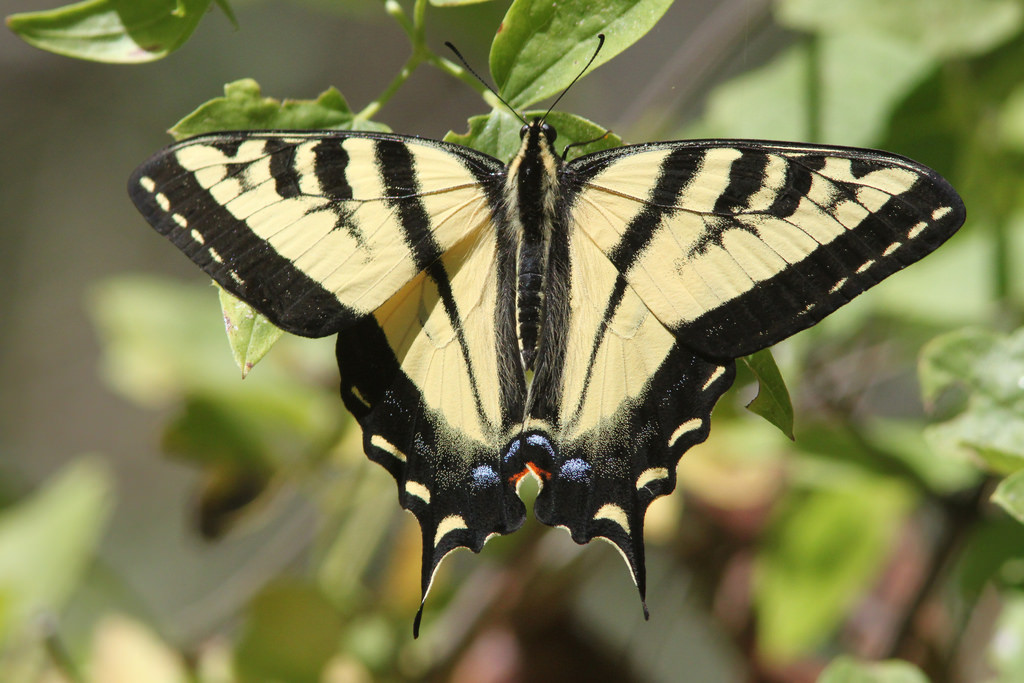Swallowtail Butterfly Identification and Comparison
This magnificent family (Papilionidae) of large butterflies is loved by many, and includes more than 600 species worldwide.
Most of these large, brightly colored butterflies feature tails on their hind wings. These tail-like appendages resemble the tails of swallow family of birds, hence their name. However, some, like the Indra and Polydamus, do not have tails.
Several species of Swallowtails are predominantly black, and share similar yellow, blue and orange markings. Identification is often difficult. Shown below are photographs of several common Swallowtail butterflies to aid in identification.
Swallowtail Butterfly Identification Chart
The identification chart below compares the colors and features of common Swallowtail butterflies using their dorsal views.

![]()
Dark-Colored Swallowtail Butterfly Comparison Chart
Several members of the Swallowtail family are dark-colored, and have very similar appearances at first glance. These include the Eastern Black Swallowtail, Spicebush Swallowtail, Pipevine Swallowtail, and the dark form of the Tiger Swallowtail. The identification chart below compares the colors and features of these common dark-colored Swallowtail butterflies as seen in ventral views.
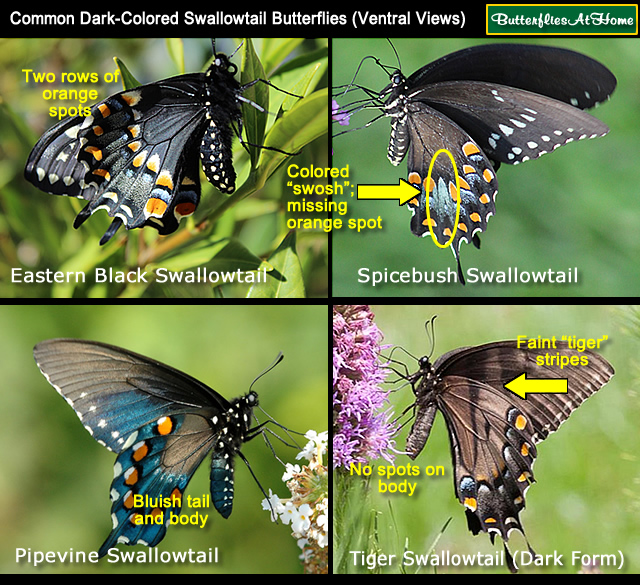

Eastern Black Swallowtail Butterfly
The male Black Swallowtail Butterfly has a row of large yellow-colored spots across the middle of its wings which are more dominant than on the female. Read more about the Eastern Black Swallowtail
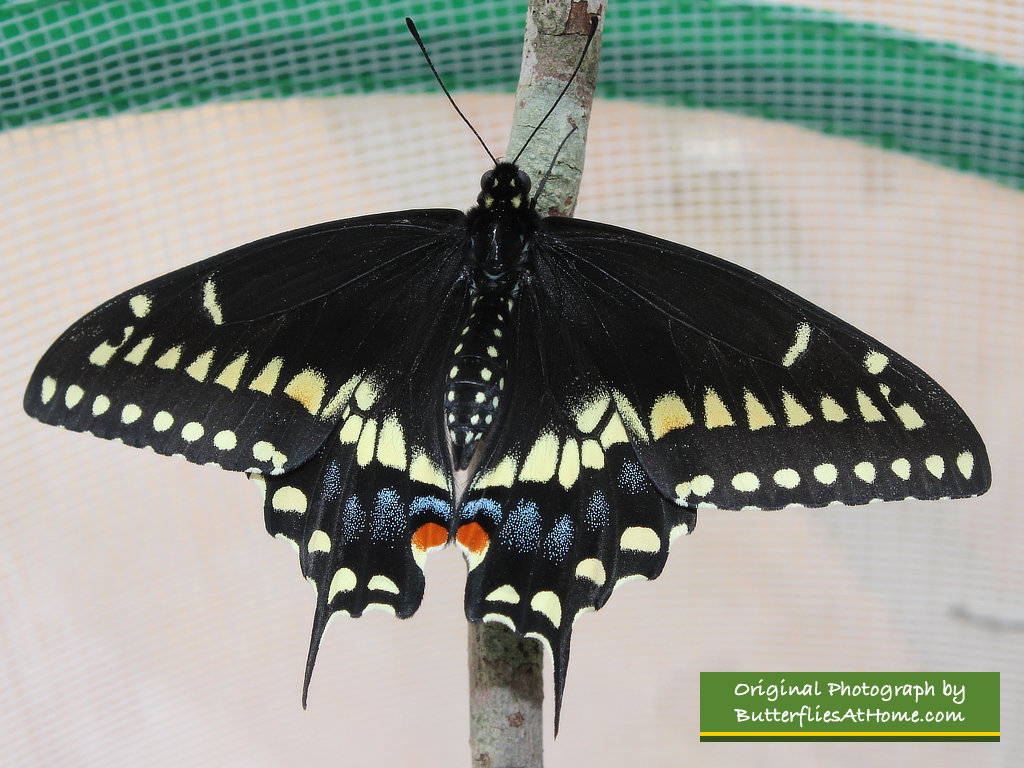
The female Black Swallowtail has a row of much smaller spots, and its patch of iridescent blue on the hind wings is more dominant than on the male
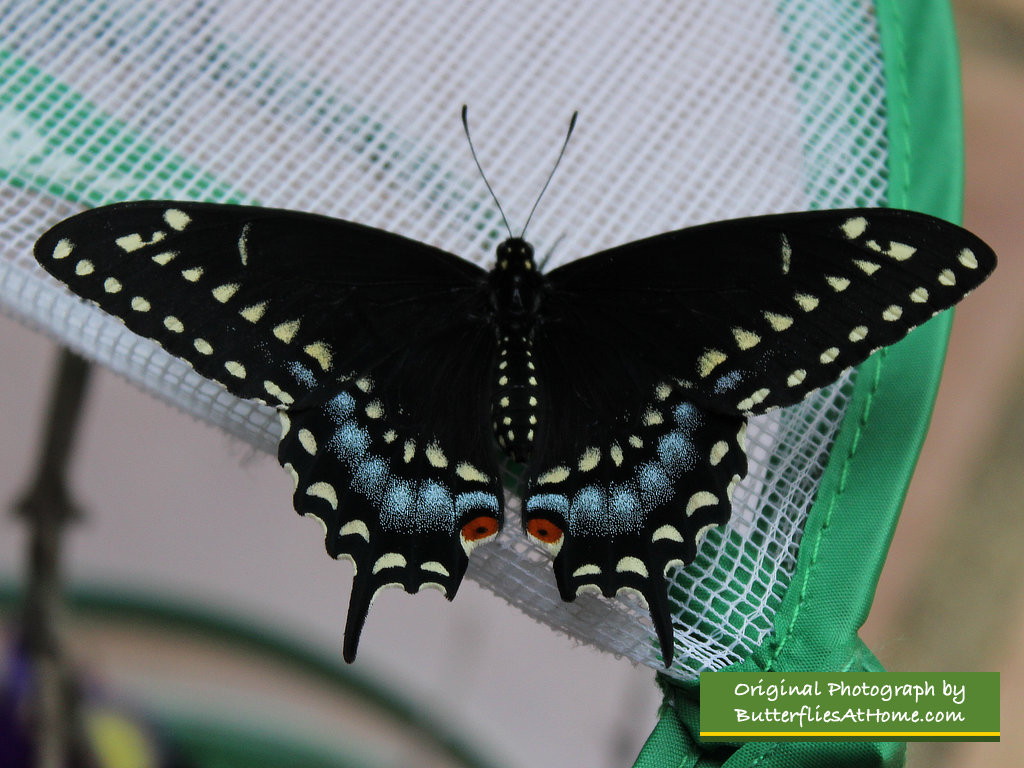
Spicebush Swallowtail Butterfly
Wings are black with light colored spots, or scales, on the trailing edges.
On the male, the spots are a pale green, and on the female the spots are iridescent blue. The underwings feature bright orange spots. Read more about the Spicebush Swallowtail
Male Spicebush Butterfly
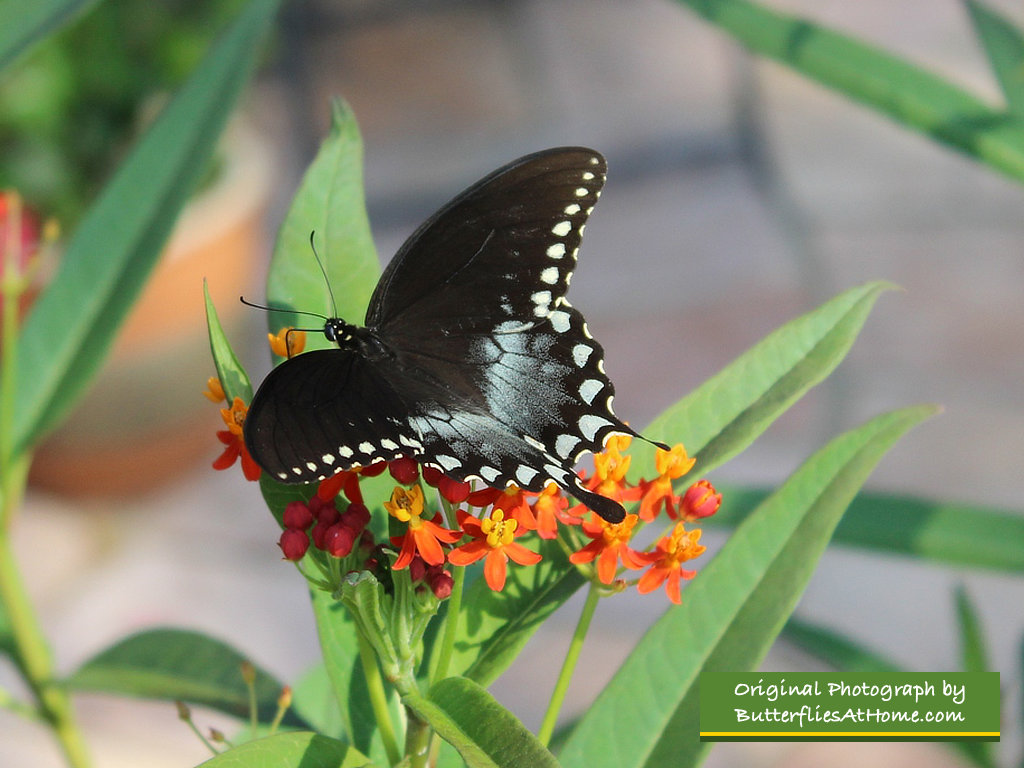
Female Spicebush Swallowtail Butterfly
Male Spicebush Swallowtail (green coloration, on the left) pursues female (blue coloration, on the right)
The chart below shows the differences seen in the ventral views of the Black Swallowtail and the Spicebush Swallowtail. The Spicebush has a bluish-green colored "swosh" and is missing one orange spot.
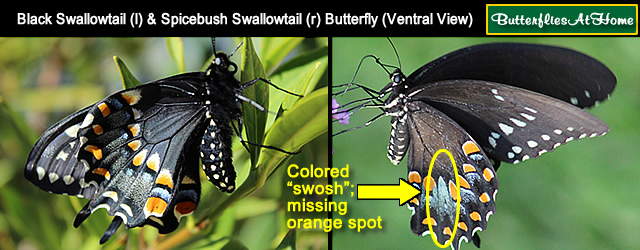

Giant Swallowtail
The upper side of the Giant Swallowtail is black, or dark chocolate brown.
It
features a line of large yellow spots directly across the wings, and another line above the trailing edges. Read more about the Giant Swallowtail
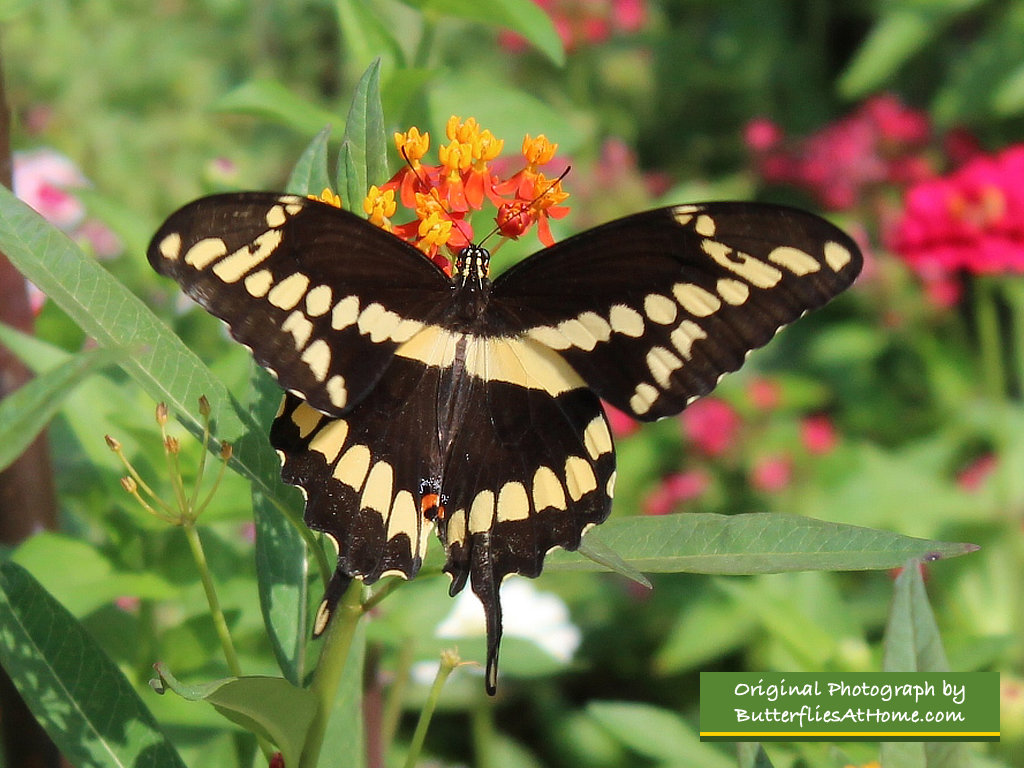
The body of the Giant Swallowtail is mostly yellow, and the underside a pale yellow with iridescent light blue patches.
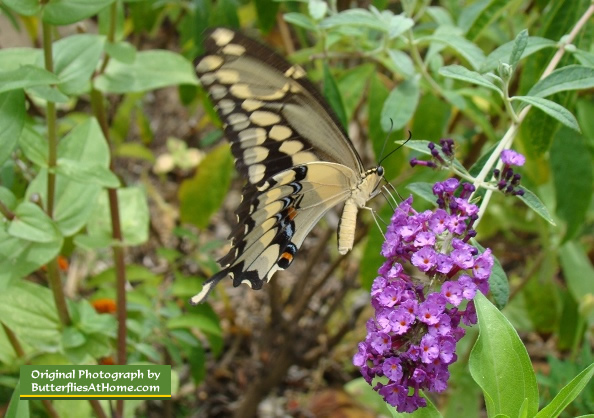
Pipevine Swallowtail ButterflyShiny black with iridescent blue hind wings with arrowhead-shaped white spots. |
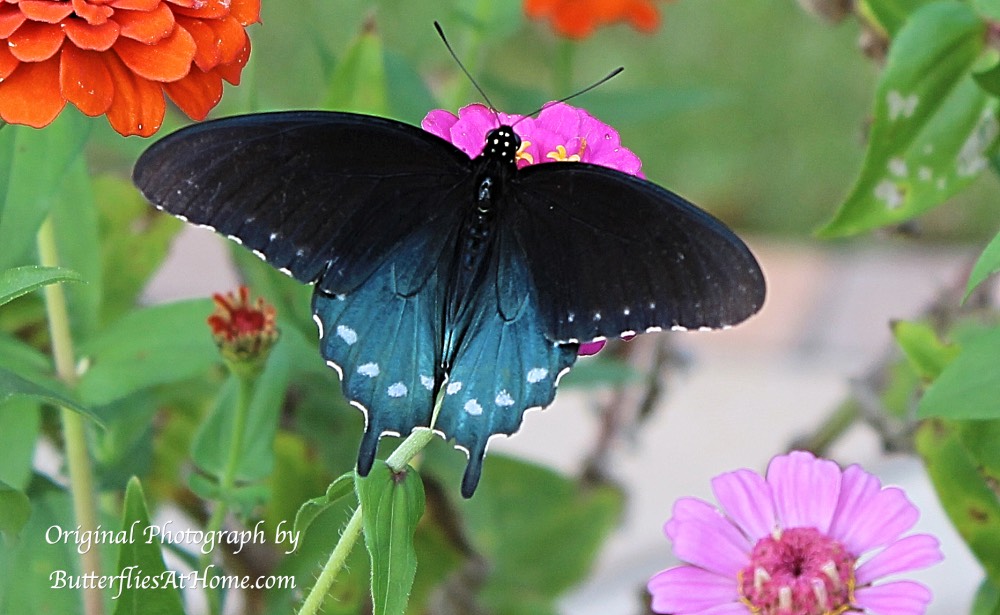 |
Eastern Tiger Swallowtail
Tiger Swallowtail (Papilio glaucus) is a beautiful, large butterfly, usually in the range of 3.5" - 5.5", easily identified by its black "tiger stripes". Male Eastern Tiger Swallowtails are always yellow, while females may be yellow or black. Females have a splash of iridescent blue wash on their tales, while males do not. Similar to the Western Tiger Swallowtail. The black form is called dimorphic coloration, which adds a level of protection by mimicking the distasteful Pipevine Swallowtail. These females often exhibit a shadow of the "tiger" stripes. Males prefer yellow females, but the black form of the female is less attractive to predators. Read more about the Eastern Tiger Swallowtail
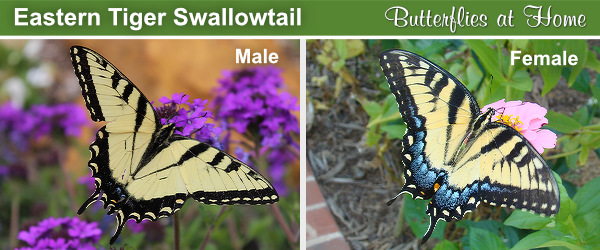
![]()
Female Tiger Swallowtail Butterfly
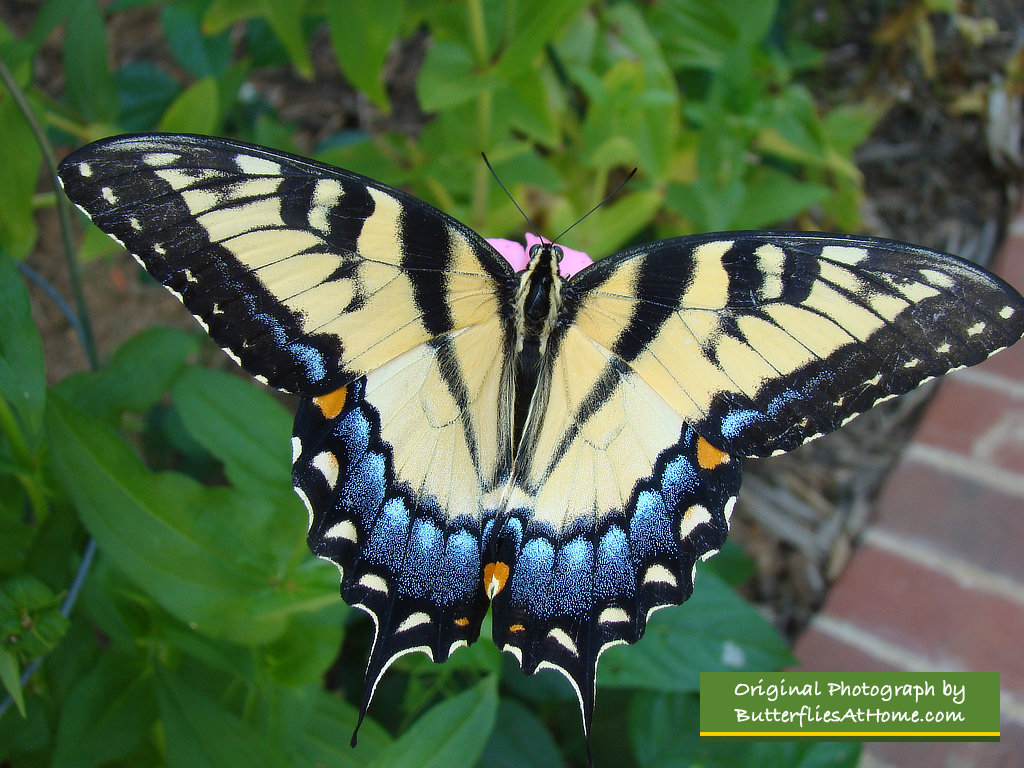
Male Tiger Swallowtail Butterfly on Purple Verbena
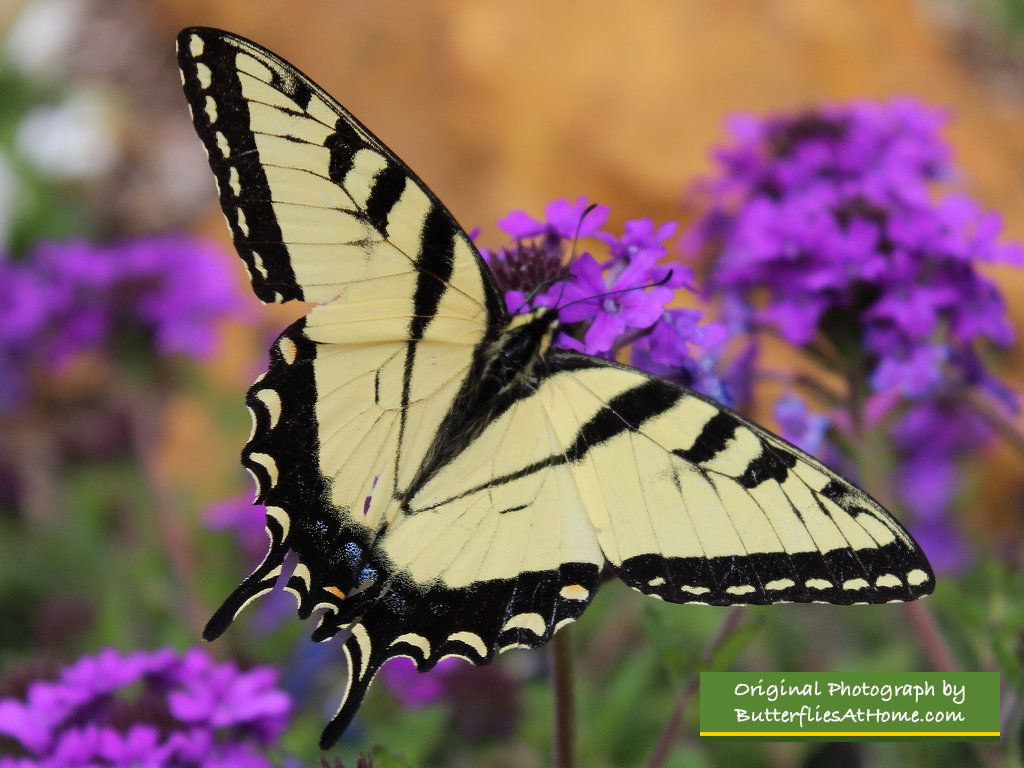
Female Tiger Swallowtail Butterfly with dark coloration
While all male Tiger Swallowtails are yellow,
females can be either yellow, or black due to dimorphic coloration
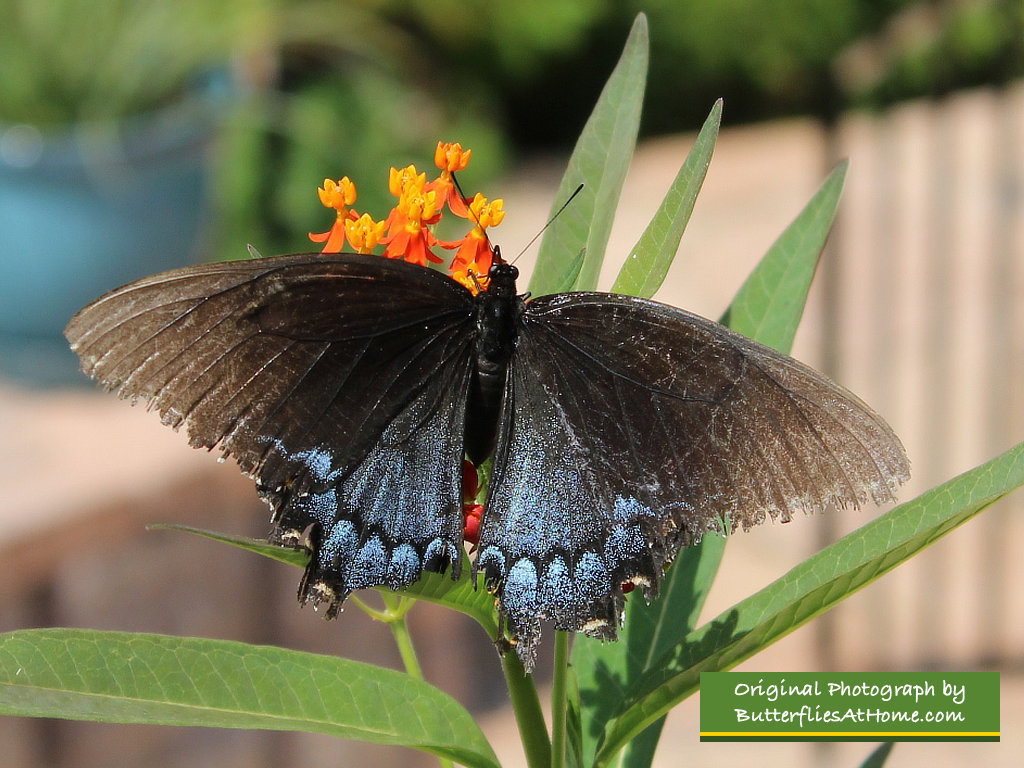
Palamedes Swallowtail Butterfly
Both sexes are similarly marked, with rounded brownish black wings rimmed with yellow spots and crossed by another broad V-shaped yellow band. Read more about the Palamedes Swallowtail

Zebra Swallowtail ButterflyThe Zebra Swallowtail (Protographium marcellus) is a beautiful butterfly welcomed in any landscape or garden. Its distinctive wing shape and long tails make it easy to identify, and its black and white-striped pattern is reminiscent of a zebra. Its wingspan is in the Size: 2.5" - 4.0" range. Read more about the Zebra Swallowtail |
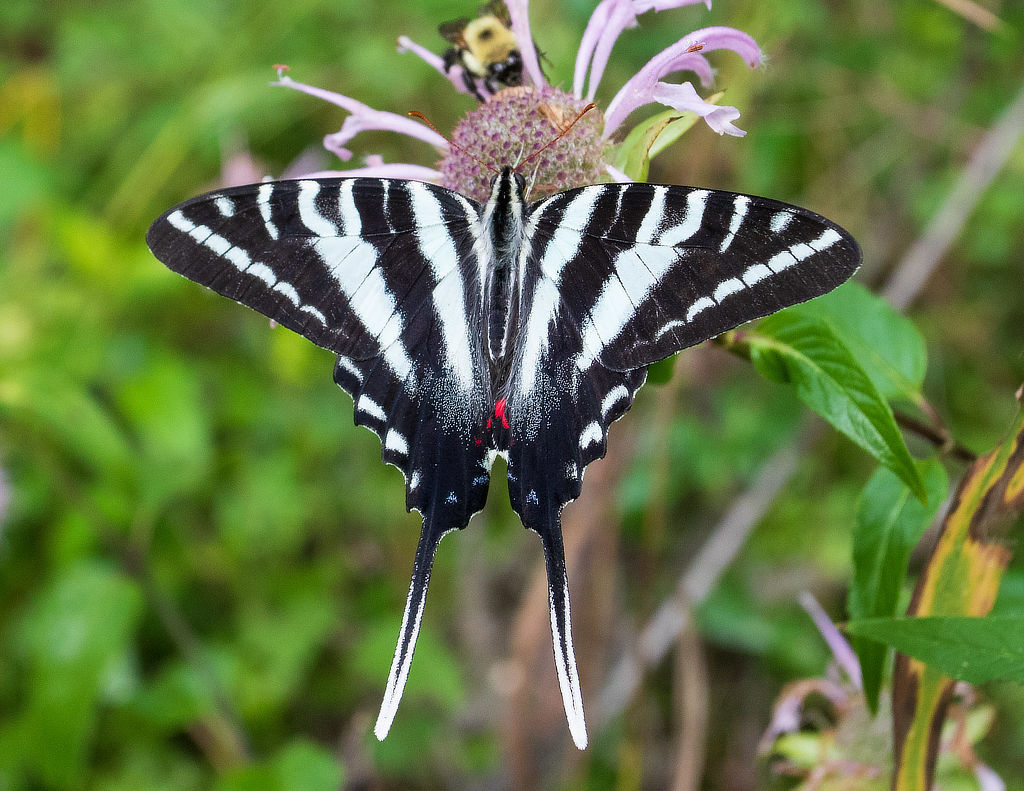 |
Two-Tailed Swallowtail ButterflyThe Two-Tailed Swallowtail (Papilio multicaudata) is a large butterfly, yellow with black stripes. It has two tails on each hind wing; the outer one is longer. It has a wingspan of 3 3/8" - 5 1/8". Read more about the Two-Tailed Swallowtail |
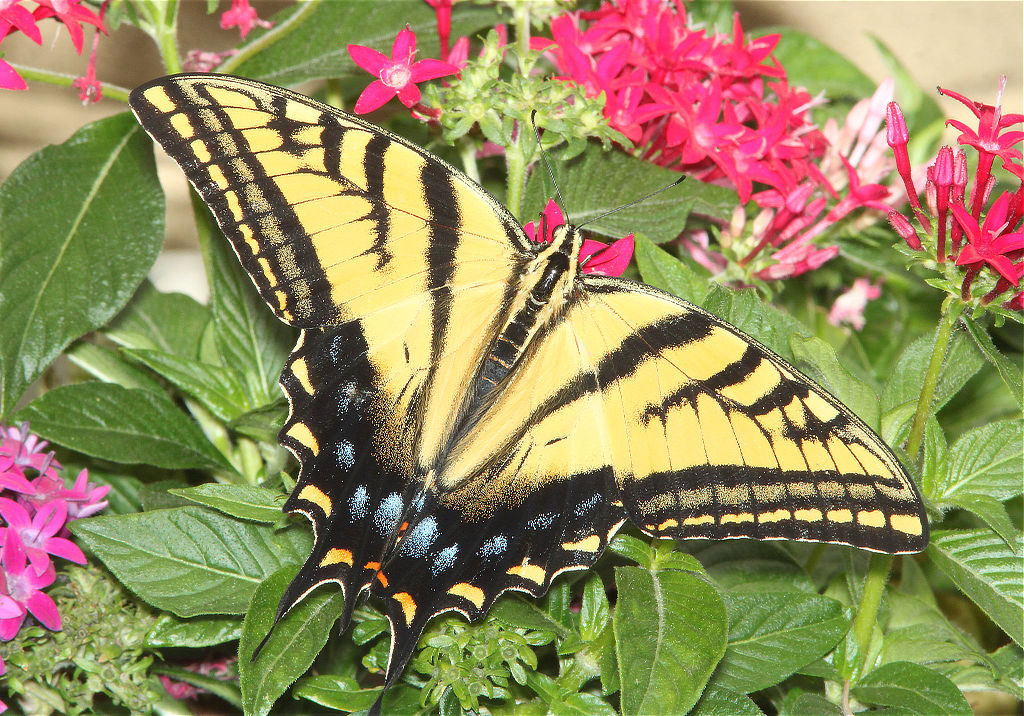 |
Pale Swallowtail ButterflyThe Pale Swallowtail (Papilio eurymedon) is black with white or creme colored stripes. Another western species that is quite similar is the Western Tiger Swallowtail. The wingspan is in the 2 1/2" - 3 1/2" range size. Read more about the Pale Swallowtail |
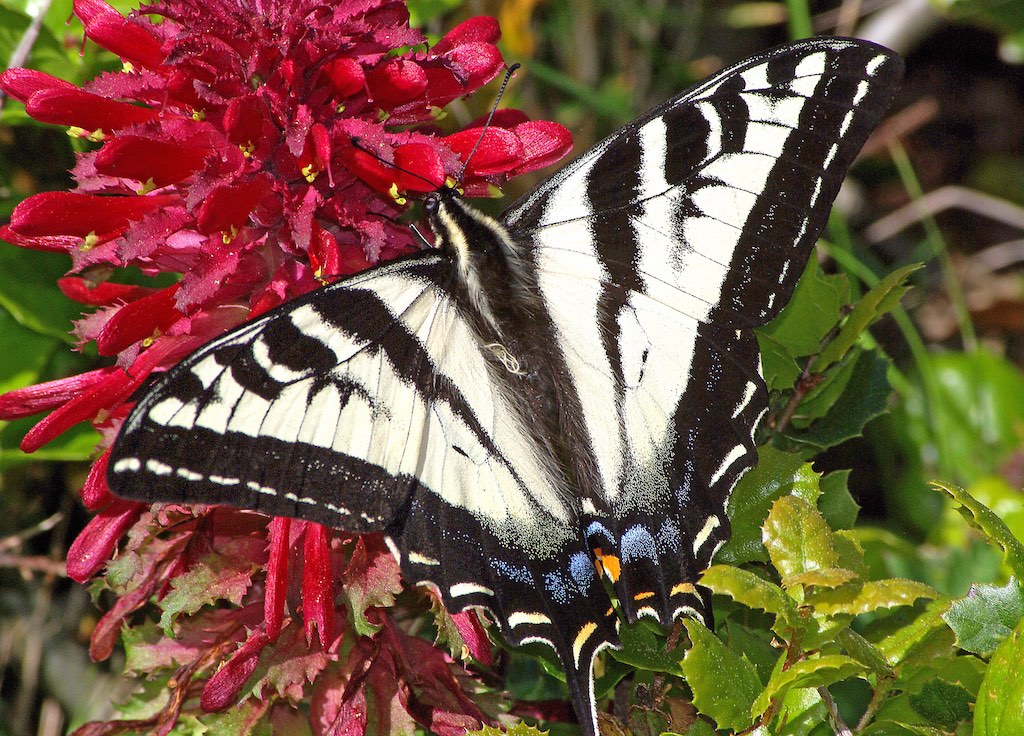 |
Polydamas Swallowtail ButterflyThe Polydamas Swallowtail (Battus polydamas) is black above with a large submarginal yellow band. It has no tails as does the typical swallowtail. It has a wing spread of 3 1/2" - 4 1/2". Read more about the Polydamas Swallowtail |
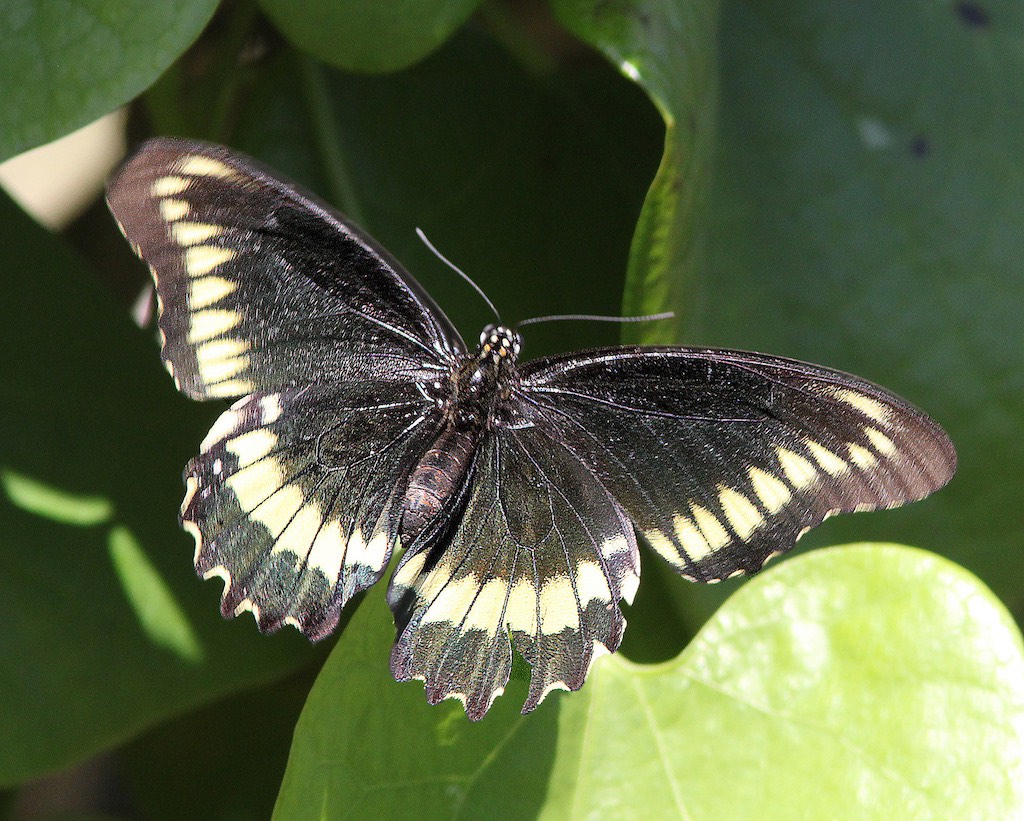 |
Anise Swallowtail ButterflyThe Anise Swallowtail (Papilio zelicaon) is a beautiful large butterfly, black with yellow spots along wing edges. The forewing has a large yellow band across the center. It ranges throughout the western United States (except Arizona and New Mexico) and Canada. The wingspan is in the 2 5/8" - 3" range. Read more about the Anise Swallowtail |
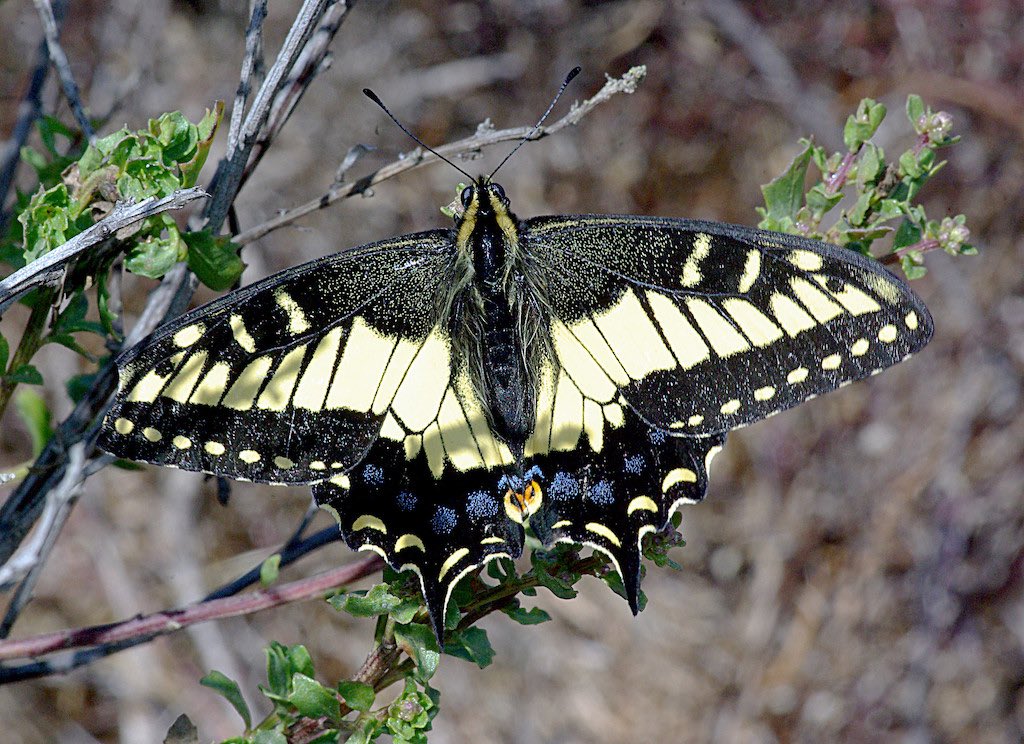 |
Indra Swallowtail ButterflyThe Indra Swallowtail (Papilio indra) is a beautiful butterfly, black with a yellow dash, and generally short tails. It ranges throughout the western United States, most commonly in the mountains and canyons of Nevada, Utah, Colorado, New Mexico, Arizona and southern California, as well as the Northwest US. Size: 2.5" - 3.0". Read more about the Indra Swallowtail |
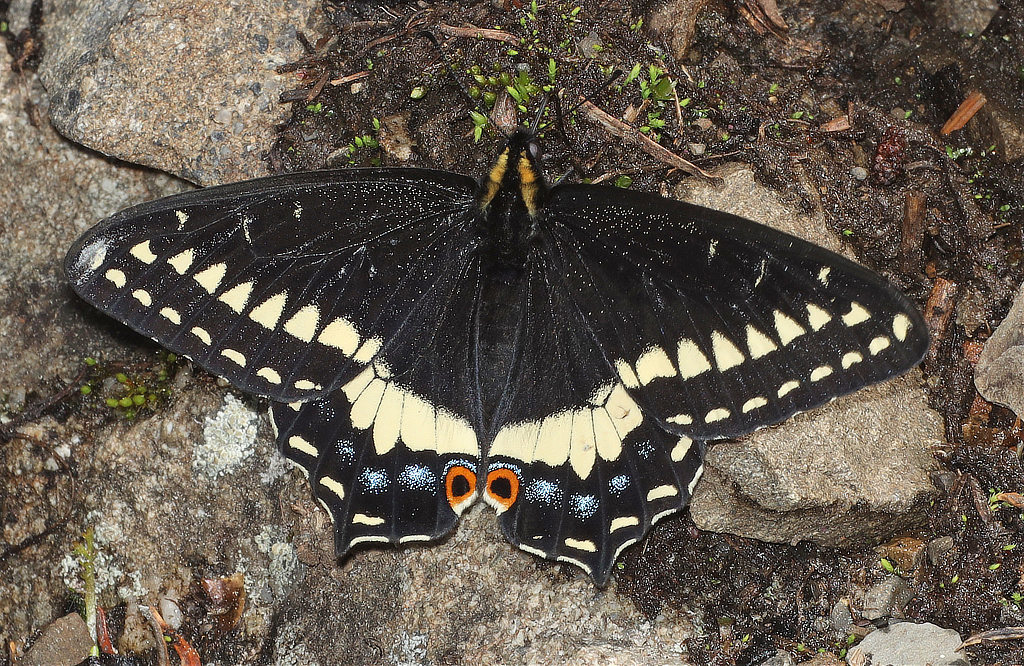 |
Western Tiger Swallowtail ButterflyThe Western Tiger Swallowtail (Papilio rutulus) is yellow with black stripes. It is similar to the Eastern Tiger Swallowtail, distinguished by location. Another western species that is quite similar is the Pale Swallowtail. The wingspan is in the 2 1/4" - 3 7/8" range. Life span is about 6-14 days. Read more about the Western Tiger Swallowtail |
Old World Swallowtail ButterflyThe Old World Swallowtail (Papilio machaon) is also known as the "Common Swallowtail" since its range is large, from Europe into North Africa and west across northern Asia and North America. It is frequently encountered at altitudes as great as 15,000 ft. In the United States it is only found west of the high plains, where it is best observed in mountain meadows. Read more about the Old World Swallowtail |
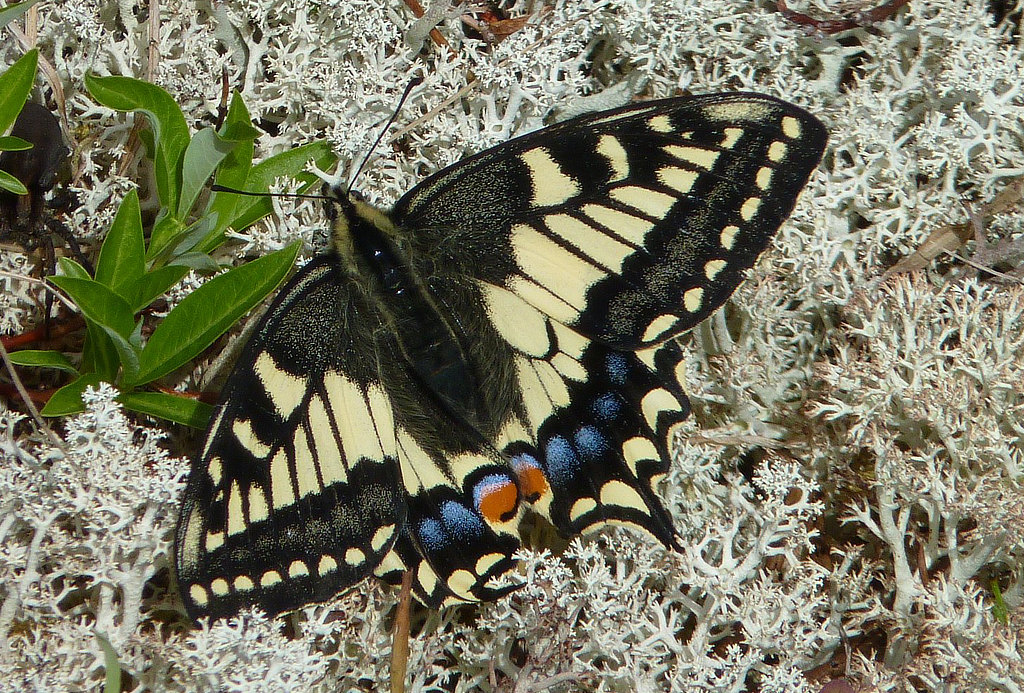 |
Red-Spotted Purple
The Red-Spotted Purple is not a swallowtail, but a brush-foot, and is black with blue or blue-screen scaling. At first glance it can be mistaken for a swallowtail, but it has no tails. Orange or red marks are seen on the tips of the wings.
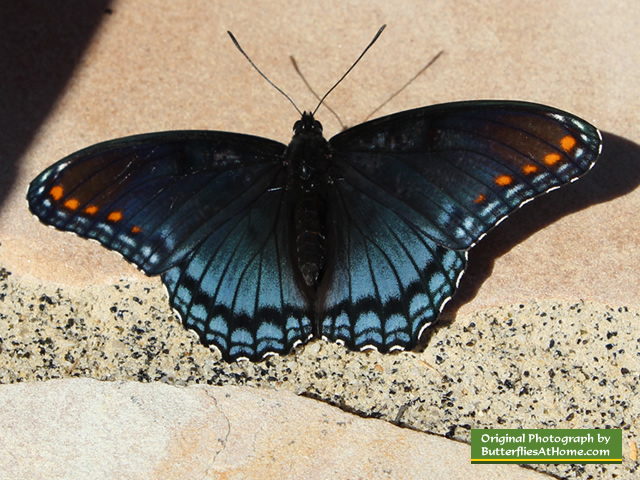
Read More About Swallowtail Species
|
||||||||||

